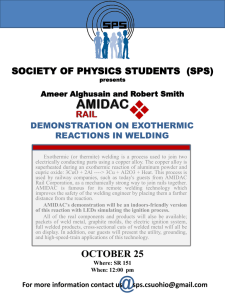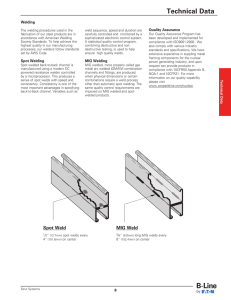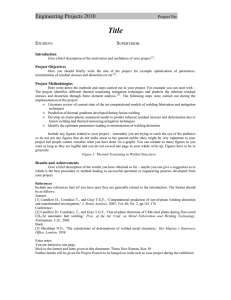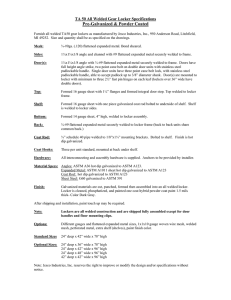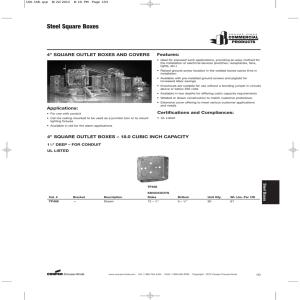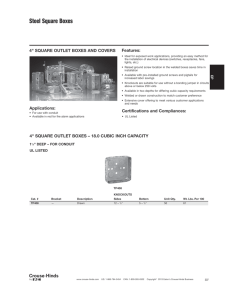Edge Joint Corner Joint Lap Joint Butt Joint T-Joint
advertisement
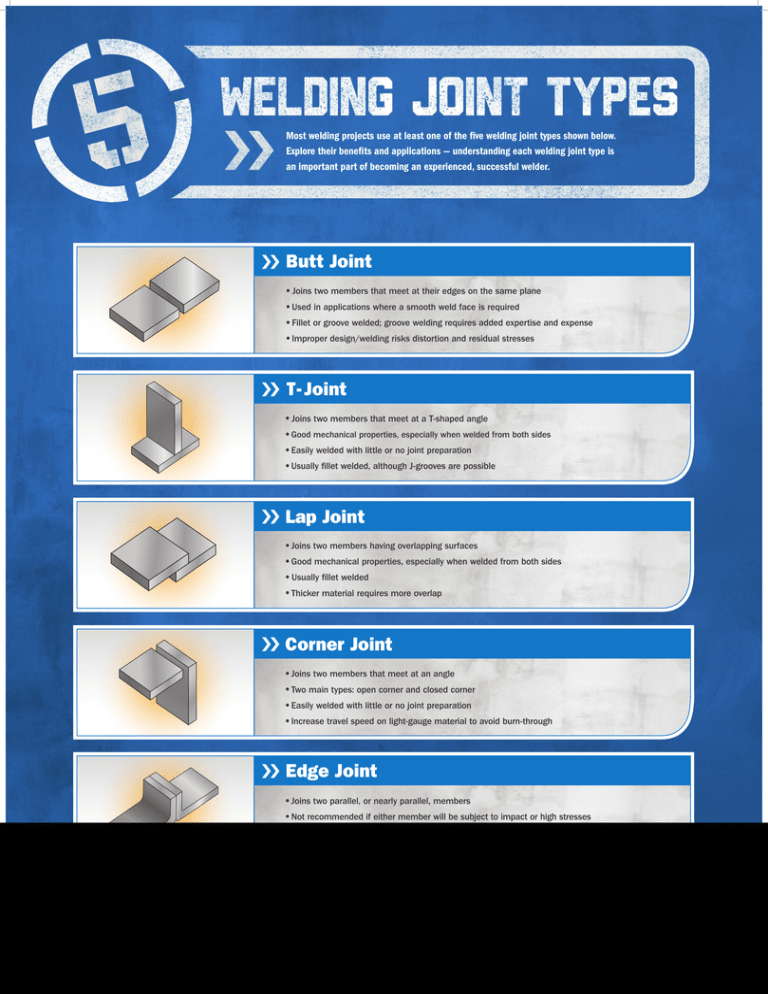
Most welding projects use at least one of the five welding joint types shown below. Explore their benefits and applications — understanding each welding joint type is an important part of becoming an experienced, successful welder. Butt Joint ● Joins two members that meet at their edges on the same plane ● Used in applications where a smooth weld face is required ● Fillet or groove welded; groove welding requires added expertise and expense ● Improper design/welding risks distortion and residual stresses T- Joint ● Joins two members that meet at a T-shaped angle ● Good mechanical properties, especially when welded from both sides ● Easily welded with little or no joint preparation ● Usually fillet welded, although J-grooves are possible Lap Joint ● Joins two members having overlapping surfaces ● Good mechanical properties, especially when welded from both sides ● Usually fillet welded ● Thicker material requires more overlap Corner Joint ● Joins two members that meet at an angle ● Two main types: open corner and closed corner ● Easily welded with little or no joint preparation ● Increase travel speed on light-gauge material to avoid burn-through Edge Joint ● Joins two parallel, or nearly parallel, members ● Not recommended if either member will be subject to impact or high stresses ● Square groove is most common, but other groove configurations are possible ● Very deep penetration is impossible MillerWelds.com © 2012 Miller Electric Mfg. Co. Miller12020_2012_Poster_Program_Joints_22x28.indd 1 12/18/12 2:05 PM
